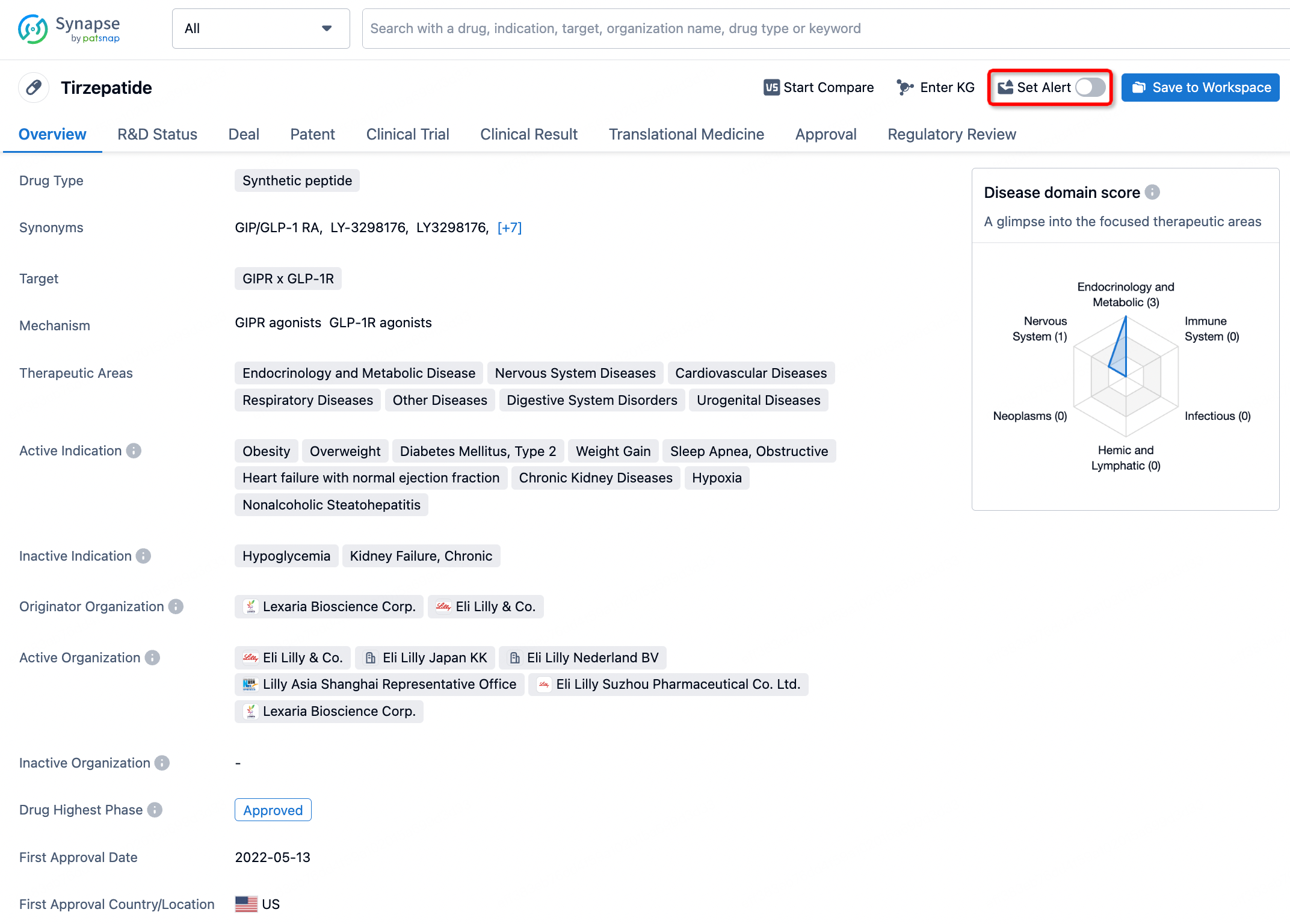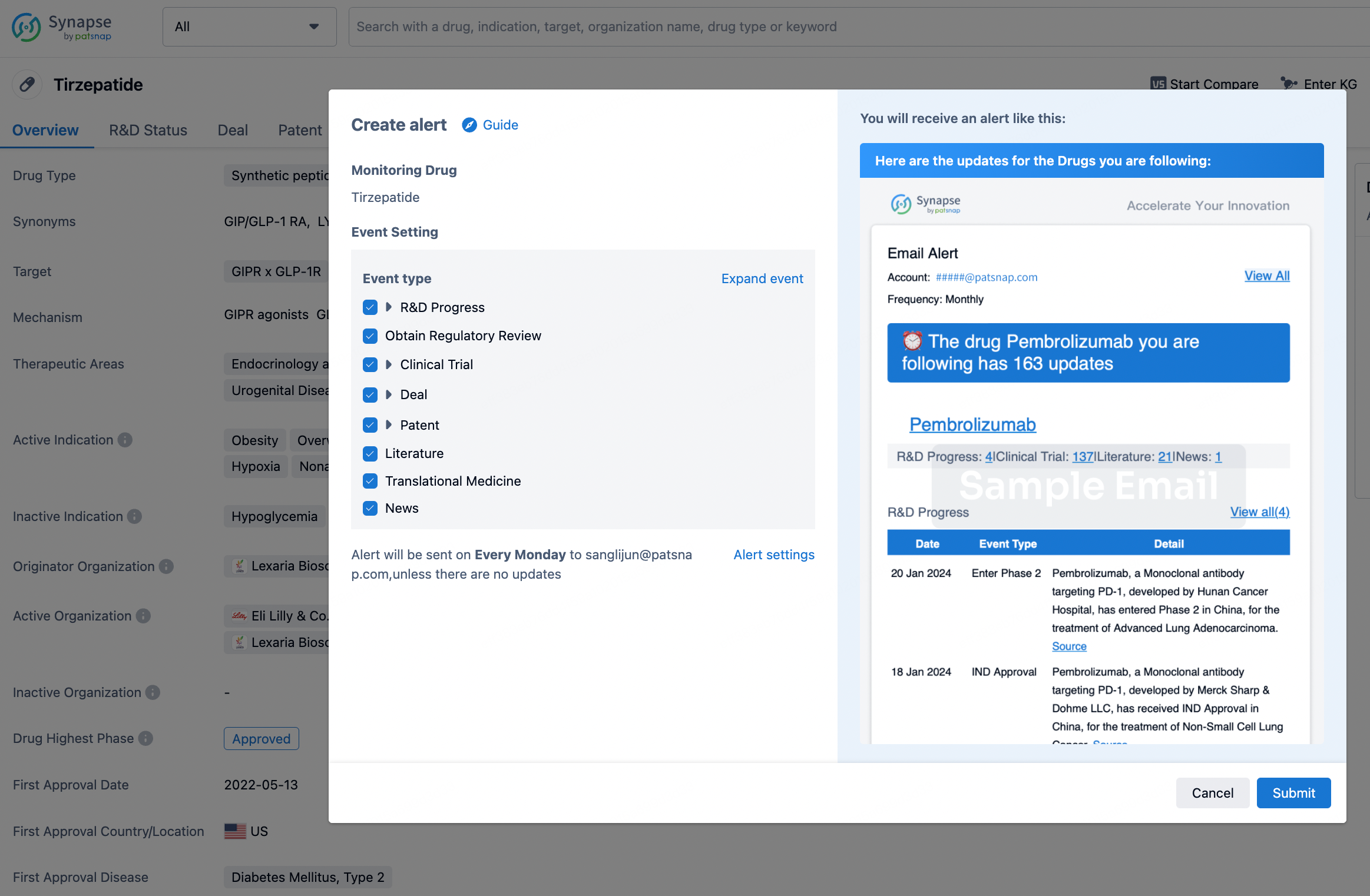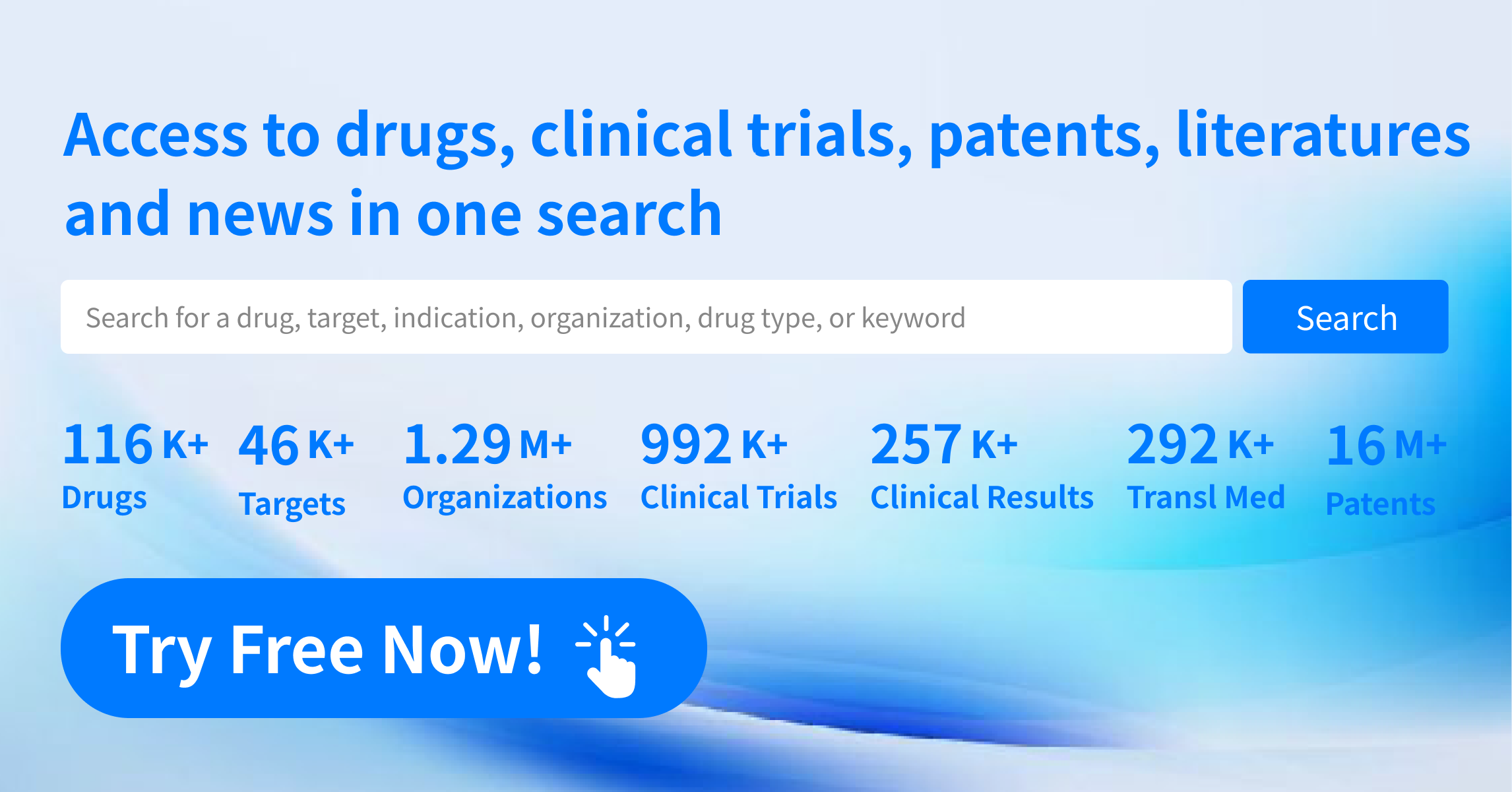Request Demo
What is Clofoctol used for?
15 June 2024
Clofoctol is an intriguing antibiotic that has garnered attention for its potential use against bacterial infections. Marketed under the trade name Octofene, Clofoctol has a unique mechanism of action that sets it apart from other antibiotics. It has primarily been studied for its effects on respiratory infections caused by Gram-positive bacteria. Several research institutions and pharmaceutical companies have delved into the possibilities Clofoctol offers, exploring its range of indications and efficacy. Currently, it is mainly utilized in certain European countries, but ongoing research may expand its use globally. The drug is classified as a bacteriostatic antibiotic, meaning it inhibits the growth and reproduction of bacteria rather than killing them outright. This characteristic makes it particularly useful in managing infections where the immune system needs to be assisted but not completely overwhelmed with a sudden bacterial die-off.
Clofoctol operates through a distinctive mechanism of action that involves interfering with bacterial protein synthesis. Specifically, the drug binds to the bacterial ribosome, a complex molecular machine responsible for protein production. By doing so, Clofoctol inhibits the translation process, thereby preventing bacteria from synthesizing essential proteins needed for their growth and survival. This inhibition is selective, targeting primarily Gram-positive bacteria, which include notorious pathogens such as Staphylococcus aureus and Streptococcus pneumoniae. Moreover, Clofoctol has been found to have an affinity for bacterial membranes, disrupting their integrity and enhancing its bacteriostatic effects. This dual-action mechanism makes Clofoctol an effective agent in managing bacterial loads, particularly in respiratory tract infections where Gram-positive bacteria are commonly implicated.
Administering Clofoctol is relatively straightforward, but it requires adherence to specific guidelines to ensure its efficacy. The drug is typically administered orally in the form of a suppository. This method might seem unconventional compared to more common oral antibiotics, but it offers distinct advantages. Suppository administration allows for the rapid absorption of the drug through the rectal mucosa, bypassing the gastrointestinal tract and thereby reducing the risk of stomach upset. The onset of action for Clofoctol is relatively quick, with therapeutic concentrations being reached within an hour of administration. For optimal results, it is generally recommended to administer the drug twice daily, although the exact dosage and duration of treatment can vary based on the severity and type of infection. Patients are advised to adhere strictly to the dosing schedule prescribed by their healthcare provider to ensure the best possible outcomes.
Like all medications, Clofoctol comes with potential side effects and contraindications that must be considered before starting treatment. Common side effects reported by patients include gastrointestinal disturbances such as nausea, vomiting, and diarrhea. These effects are generally mild and tend to resolve on their own without the need for medical intervention. However, some patients may experience more severe reactions, including allergic responses characterized by rash, itching, or swelling. In rare cases, anaphylactic reactions have been reported, necessitating immediate medical attention. Contraindications for Clofoctol use include patients with a known hypersensitivity to the drug or any of its components. Additionally, it is not recommended for use in individuals with severe hepatic impairment, as the liver plays a crucial role in metabolizing the drug. Pregnant and breastfeeding women should use Clofoctol only if absolutely necessary and under the guidance of a healthcare professional, as its safety profile in these populations has not been fully established.
When considering the use of Clofoctol, it is important to be aware of potential drug interactions that could affect its efficacy and safety. Clofoctol is primarily metabolized by the liver, and it has the potential to interact with other medications that share the same metabolic pathways. For instance, drugs that induce or inhibit the activity of liver enzymes such as cytochrome P450 could alter the pharmacokinetics of Clofoctol, leading to either reduced efficacy or increased risk of toxicity. Concurrent use of other antibiotics is generally not recommended unless specifically advised by a healthcare provider, as this could lead to antagonistic effects or increased side effects. Additionally, patients taking anticoagulant medications should exercise caution, as Clofoctol may enhance the effects of these drugs, increasing the risk of bleeding. It is crucial for patients to inform their healthcare provider of all medications and supplements they are currently taking to avoid any adverse interactions.
In conclusion, Clofoctol represents a unique and valuable addition to the arsenal of antibiotics available for treating bacterial infections, particularly those of the respiratory tract caused by Gram-positive bacteria. Its distinctive mechanism of action, ease of administration, and relatively favorable side effect profile make it a viable option for many patients. However, like all medications, it requires careful consideration of potential side effects, contraindications, and drug interactions. Ongoing research and clinical trials continue to explore the full potential of Clofoctol, and future developments may further expand its indications and applications in the medical field. As always, the use of any antibiotic should be guided by a healthcare professional to ensure the best possible outcomes for patients.
Clofoctol operates through a distinctive mechanism of action that involves interfering with bacterial protein synthesis. Specifically, the drug binds to the bacterial ribosome, a complex molecular machine responsible for protein production. By doing so, Clofoctol inhibits the translation process, thereby preventing bacteria from synthesizing essential proteins needed for their growth and survival. This inhibition is selective, targeting primarily Gram-positive bacteria, which include notorious pathogens such as Staphylococcus aureus and Streptococcus pneumoniae. Moreover, Clofoctol has been found to have an affinity for bacterial membranes, disrupting their integrity and enhancing its bacteriostatic effects. This dual-action mechanism makes Clofoctol an effective agent in managing bacterial loads, particularly in respiratory tract infections where Gram-positive bacteria are commonly implicated.
Administering Clofoctol is relatively straightforward, but it requires adherence to specific guidelines to ensure its efficacy. The drug is typically administered orally in the form of a suppository. This method might seem unconventional compared to more common oral antibiotics, but it offers distinct advantages. Suppository administration allows for the rapid absorption of the drug through the rectal mucosa, bypassing the gastrointestinal tract and thereby reducing the risk of stomach upset. The onset of action for Clofoctol is relatively quick, with therapeutic concentrations being reached within an hour of administration. For optimal results, it is generally recommended to administer the drug twice daily, although the exact dosage and duration of treatment can vary based on the severity and type of infection. Patients are advised to adhere strictly to the dosing schedule prescribed by their healthcare provider to ensure the best possible outcomes.
Like all medications, Clofoctol comes with potential side effects and contraindications that must be considered before starting treatment. Common side effects reported by patients include gastrointestinal disturbances such as nausea, vomiting, and diarrhea. These effects are generally mild and tend to resolve on their own without the need for medical intervention. However, some patients may experience more severe reactions, including allergic responses characterized by rash, itching, or swelling. In rare cases, anaphylactic reactions have been reported, necessitating immediate medical attention. Contraindications for Clofoctol use include patients with a known hypersensitivity to the drug or any of its components. Additionally, it is not recommended for use in individuals with severe hepatic impairment, as the liver plays a crucial role in metabolizing the drug. Pregnant and breastfeeding women should use Clofoctol only if absolutely necessary and under the guidance of a healthcare professional, as its safety profile in these populations has not been fully established.
When considering the use of Clofoctol, it is important to be aware of potential drug interactions that could affect its efficacy and safety. Clofoctol is primarily metabolized by the liver, and it has the potential to interact with other medications that share the same metabolic pathways. For instance, drugs that induce or inhibit the activity of liver enzymes such as cytochrome P450 could alter the pharmacokinetics of Clofoctol, leading to either reduced efficacy or increased risk of toxicity. Concurrent use of other antibiotics is generally not recommended unless specifically advised by a healthcare provider, as this could lead to antagonistic effects or increased side effects. Additionally, patients taking anticoagulant medications should exercise caution, as Clofoctol may enhance the effects of these drugs, increasing the risk of bleeding. It is crucial for patients to inform their healthcare provider of all medications and supplements they are currently taking to avoid any adverse interactions.
In conclusion, Clofoctol represents a unique and valuable addition to the arsenal of antibiotics available for treating bacterial infections, particularly those of the respiratory tract caused by Gram-positive bacteria. Its distinctive mechanism of action, ease of administration, and relatively favorable side effect profile make it a viable option for many patients. However, like all medications, it requires careful consideration of potential side effects, contraindications, and drug interactions. Ongoing research and clinical trials continue to explore the full potential of Clofoctol, and future developments may further expand its indications and applications in the medical field. As always, the use of any antibiotic should be guided by a healthcare professional to ensure the best possible outcomes for patients.
How to obtain the latest development progress of all drugs?
In the Synapse database, you can stay updated on the latest research and development advances of all drugs. This service is accessible anytime and anywhere, with updates available daily or weekly. Use the "Set Alert" function to stay informed. Click on the image below to embark on a brand new journey of drug discovery!
AI Agents Built for Biopharma Breakthroughs
Accelerate discovery. Empower decisions. Transform outcomes.
Get started for free today!
Accelerate Strategic R&D decision making with Synapse, PatSnap’s AI-powered Connected Innovation Intelligence Platform Built for Life Sciences Professionals.
Start your data trial now!
Synapse data is also accessible to external entities via APIs or data packages. Empower better decisions with the latest in pharmaceutical intelligence.


